I continue to be pleasantly surprised to find out just how many things can be preserved without refrigeration, canning or freezing. Recently our local market had a great sale on butter, so I bought several pounds to preserve and keep in our root cellar. But the great thing about this preservation method is that you don’t need a canner! And since we don’t run a large storage freezer, this is a great alternative way to preserve large amounts of butter!
I love our goats and the milk God provides through them and have made a little butter from their milk. But the amount of cream contained in goat milk is a fraction of that found in cow milk, as well as more difficult to extract from the milk. A cream separator is low on our “to get” list, so I usually end up buying butter from the store at this point in our lives (although we do use lard as well). I keep a keen eye out for a sale on butter at the local market and then “pounce” and buy several pounds if I am able in order to stock up our pantry in a cost effective way.
The process to preserve butter is so easy and quick that if you blink before you read this entire blog post you might miss it! I started to type out my own instructions but found online the butter preserving recipe I had been given and have posted it below along with my own pictures and a few added notes.
1. Use any butter that is on sale. Lesser quality butter requires more shaking (see #8 below), but the results are the same as with the expensive brands:
2. Unwrap all the butter quarters and place them in a pot large enough to easily melt and process your butter:
3. Place pint jars in a cold oven without rings or seals and turn the heat to 250 degrees for at least 20 minutes. Place the jars directly on the rack or you may find a roasting pan works well for holding the pint jars while in the oven. One pound of butter slightly more than fills one pint jar, so if you melt 11 pounds of butter, heat 12 pint jars:
4. While the jars are heating, melt the butter slowly until it comes to a slow boil. Using a large spatula, stir the bottom of the pot often to keep the butter from scorching. Reduce the heat and simmer for a minimum of 5 minutes. A good simmer time will lessen the amount of shaking required (see #8 below):
Here’s what it looks like if it gets scorched a little:
5. You will notice a thick foam form at the top. You’ll need to continue stirring for several minutes until this foam begins to dissipate. The foam can get pretty thick:
And here it is with the foam dissipating:
6. In the meantime, place the jar lids in a small pot with water and bring to a boil. Then turn the heat to low and leave them simmering in hot water until needed:
7. After most of the foam has dissipated, stirring the melted butter from the bottom to the top with a soup ladle or small pot with a handle, pour the melted butter carefully into heated jars through a canning jar funnel. Leave 3/4″ of head space in the jar, which allows room for the shaking process. Carefully wipe off the top of the jars, then get a hot lid from the simmering water, add the lid and ring and tighten securely. Lids will seal as they cool:
8. Once a few lids “ping,” shake while the jars are still warm, but cool enough to handle easily, because the butter will separate and become foamy on top and white on the bottom. In a few minutes, shake again, and repeat until the butter retains the same consistency throughout the jar.
9. While cooling and hardening, shake again, and the melted butter will then look like butter and become firm. This final shaking is very important! Check every 5 minutes and give the jars a little shake until they are hardened in the jar:
10. Preserved butter should store for 3 years or longer on a cool, dark shelf. Preserved butter does not “melt” again when opened, so it does not need to be refrigerated upon opening, provided it is used within a reasonable length of time.
DISCLAIMER: There is information found on the internet claiming this is not a safe way to preserve butter because there is no official supporting information. But if the butter is kept in a cool dry place, it should be kept preserved for a long time. We have had no problems with it in our experience. However, these are my own personal thoughts and opinions. I would encourage you to do your own homework and proceed at your discretion.
NOTE: This form of preserved butter may taste a little more salty because of its condensed form. Use unsalted butter and add salt to your taste if this is of concern to you. I have had much success using it as-is in recipes and in our everyday uses for butter.
We have found this to be a great way to preserve butter in a cost-effective way for any lifestyle!
Susan
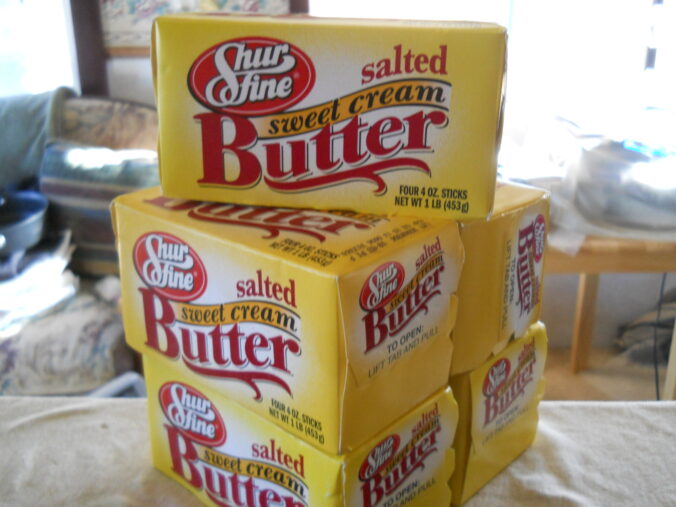
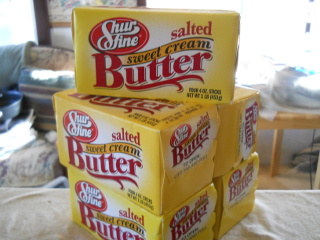
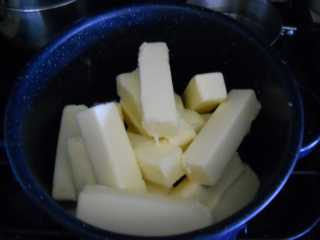
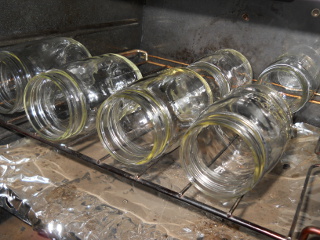
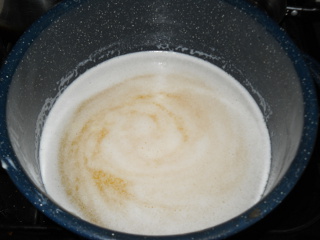
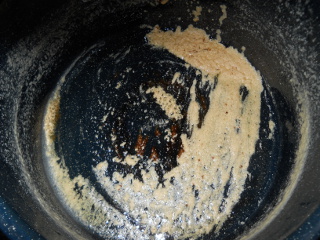
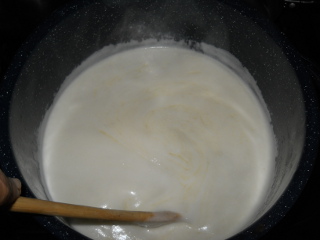
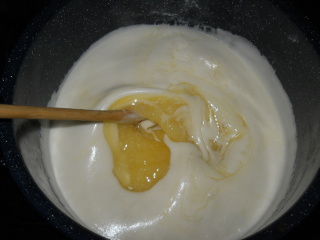
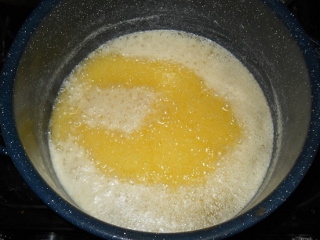
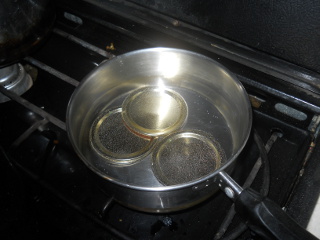
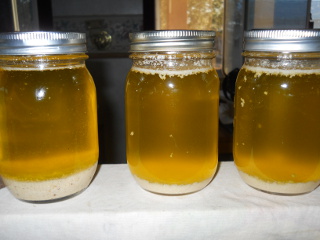
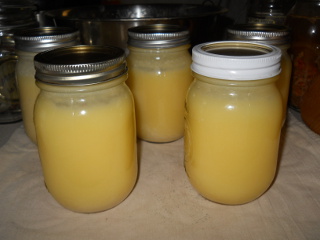
This really does work well, doesn't it, regardless of what the experts say. LOL. A very nice tutorial, thanks. We always enjoy it when you all do a blog post.
Judy On Big Turtle Creek
It says in the instructions that it should keep about 3 years. Do you have a time frame from personal experience on how long it will keep? We are blessed to have a Jersey cow but we're trying to get away from that dependence on the freezer and I do have a cellar so this may help us have one less thing that needs frozen! Thanks.
Thank you, Judy, for your encouraging comment! It's great to hear from you!
Hello, Missy! Thank you for your comment. I have only been able to buy 20-30 lbs. of butter at a time and we go through it within a year or so but I agree with the online person that it probably can go up to 3 years with no problem if kept in a cool, dark and dry place. And I believe you would be able to tell if it had gone rancid. Also, I don't have any experience in preserving raw milk so you may need to just experiment with that. But I hope you are successful in your endeavors and I would love to hear back from you on your results! Thank you again.
Susan
You can tell by the smell is it's rancid. We can ours in half-pints as there's only two of us and in summer it doesn't take long after opening for it to go south. Also, for the really dog days I usually do up some ghee or clarified butter which stays fresh in the heat much longer. Mine isn't stored sealed in as cool an environment as Susan's and like her we haven't canned up 3 years worth, but we haven't had any trouble with the sealed jars going bad even keeping them in a warmer building. We are curious, once our goats start milking, how goat butter works out canned.
Thanks again, Judy! Hey, you all have a manual cream separator, correct? Are you able to provide an estimate of about how much butter you can make from, let's say, a gallon of raw goat milk? Or whatever ratio you prefer to use. Your answer might move a cream separator up on our list
Thanks much!
Susan
Thanks for such an informative post. I usually buy butter when it' on sale and then freeze it, but this would be a better off, off, grid method. I, too, always enjoy posts from you two!
David and Susan, It's been a few years since I've had goats milk but I'd give a conservative estimate at about a pint of cream per gallon to make probably 1/2 pound butter. I'll email you with a better figure in a few weeks after I start milking again. I found where Wardeh Harmon on gnowfglins is making butter from cultured whole goat milk. She gives a yield of 4 tablespoons per quart of milk which pretty much jives with my memory. The limiting factor for me on the technique, though, is having to run a mixer or blender for 20 minutes!
Thank you, Susan, for sharing this. I canned butter last year and still haven't opened it up because I've been leery. I had, as Judy said, made ghee before (post here: http://www.nourishingdays.com/2011/05/making-ghee-a-dairy-free-method-of-preserving-butter/).
I think my mental block is from my understanding of making ghee. I thought that it was the removing of the milk/dairy solids that preserved it.
You have given me the courage (and reminder ;)) to open up a jar of that butter.
Thank you!
in belgium, where i live, butter preserved this way is still quite often used, especially by older people, who still know about traditional reservation techniques. my mother used to make it, and we often had it over boiled potatoes. oh so yummy!
Just so anyone who finds this gets both sides of the story. Here is the "Experts" point of view. Use this information and the info on this page to make your own decisions.
http://nchfp.uga.edu/questions/FAQ_canning.html#33
Hello Matt, and thank you for your comment! Absolutely, I encourage everyone to perform their own research and proceed only at their discretion. I have updated the blog post to reflect my thoughts as such.
Thank you for the link!
Susan
Does this have a high risk of botulism?
Hello Anonymous,
Thank you for your question. I would encourage you to do your own homework and don't try it if you are not comfortable. In my personal opinion there is very low, if any, risk for botulism. According to my research, it can occur mainly in fish, meat, poultry and vegetables and with very low acid home-canned foods. Butter has a ph of 6.1-6/4, which is acidic and not alkaline.
Please review all of the Q/A above which should help, as well. I have done this several years now and have never had an issue.
I hope that helps!
Susan
I read that butter should be preserved by canning if you live over 1000 feet. We live at 4500 feet. I’d like to try your method, but would be interested in your take on it.
Thank you!
Hello Anne!
Thank you for your comment. Hmmmm, this is just my opinion and please do what you feel it best. Well, this method preserves the butter by creating a vacuum seal. I’m not sure how that works at higher altitudes. If you have a pressure canner and don’t want to lose any product, by all means, go ahead and pressure can it. But, if you find a sale on butter and want to try it with just a few pounds, then that would be a good test. I think you can tell if it goes bad by a rancid smell. I’ve never had any issues at 1,100 feet. I hope it works well for you! Please let me know if you have other questions or concerns and I would love to hear how it goes with you if you try it!
Susan